Research – Dance

Research – Dance
Alyah Baker
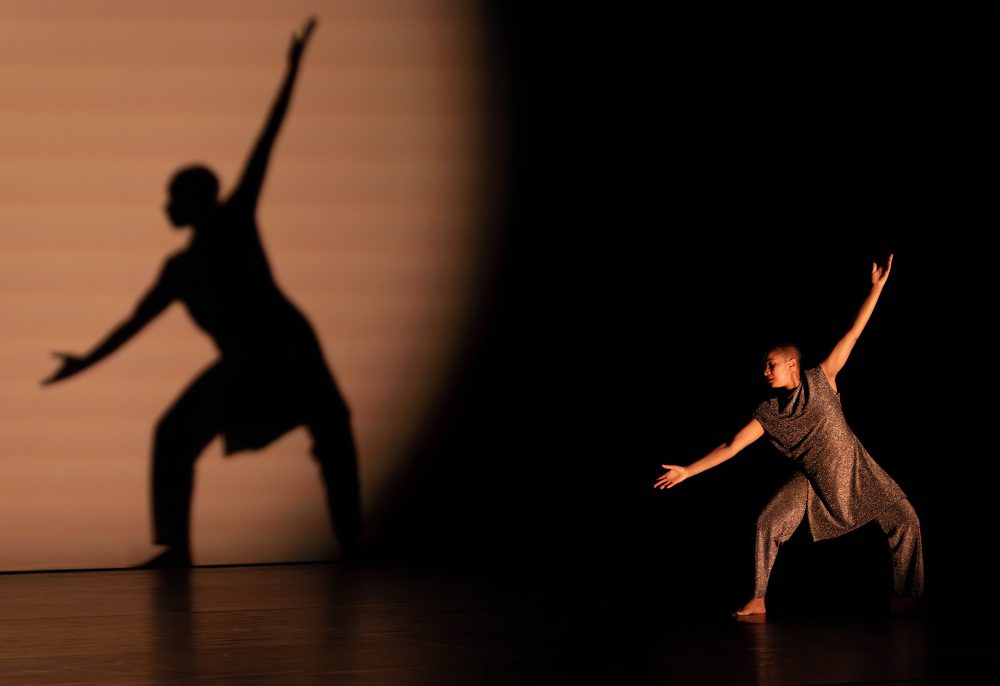
Alyah Baker researches the transformative impact of somatic practice, Black feminism, and queer aesthetics on concert dance traditions in the United States. Her current project, Quare Dance, delves into both historical and contemporary articulations of ballet pedagogy and performance, highlighting the contributions of often-overlooked teachers, choreographers, and performers. These resurfaced dance genealogies serve as the foundation for a new evening-length ballet and inform Baker’s collaborative and empowering approach to ballet technique and choreography.
Baker has received grants from the National Performance Network, South Arts, and United Arts Council of Raleigh and Wake County to support her ongoing research and choreography projects. Her writing has been published in Anti-Racism in Ballet Teaching and will appear in the forthcoming Oxford Handbook of Ballet Pedagogy. Baker has presented her research at various international and national conferences, including the Dance Studies Association, CORPS de Ballet International, the National Dance Education Organization, and the American Studies Association. In addition to her academic research, Baker maintains an active performance career.
E.E. Balcos
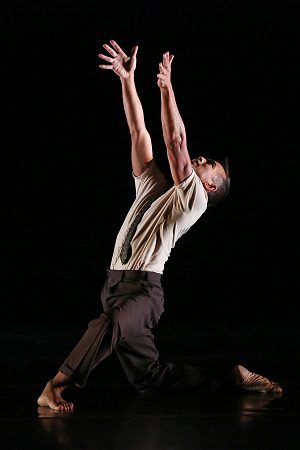
E.E. Balcos’s research in dance concerns somatic movement practice, primarily Body-Mind Centering®, and its application to dance technique and performance, improvisation, contact improvisation, choreography, and interdisciplinary collaboration. His performative works artistically express issues in social and environmental justice and equality. He is a certified Body-Mind Centering® Somatic Movement Educator, a registered Master Somatic Movement Educator, and a registered Somatic Dance Educator with the International Somatic Movement Education and Therapy Association (ISMETA), serving on the ISMETA Board of Directors.
Ann Dils

Professor Ann Dils’s current project is “Dancing the Depression: Community-Based Movement in 1930s New York City,” a book about dance in Manhattan in the 1930s, focusing on vernacular dance as integral to ethnic identity and community stability and support during the Depression. Existing research regarding dance in the 1930s emphasizes modern dance as a means of social protest; the vibrant dancing of Lindy Hoppers at the Savoy; or dance marathons during which exhausted participants vied for prize money over long hours of dancing. To these understandings, Dils hopes to contribute little-known histories like that of New York’s resident Chinese opera, and information about large public events in which hundreds or thousands of dancers and spectators celebrated and shared dance styles from home countries. Among her resources are Folk-News newsletters, published throughout the 1930s by New York City’s Folk Festival Council, currently held at the Jerome Robbins Dance Division, New York Public Library for the Performing Arts; maps of ethnic neighborhoods that are part of 1930s urban planning studies; and library holdings such as those of New York University’s Archives of Irish America. In Spring 2025, Dils will research Italian-American folk dance leaders through archives at the Historical Society of Pennsylvania, and performances held at the 1939-1940 New York World’s Fair, through archives at the Schoenberg Center of the New York Public Library.
Dils has also written about choreographers Bill T Jones and Doris Humphrey and contributed to sources supporting the pedagogy of dance studies. With Ann Cooper Albright, Dils co-directed Accelerated Motion: Towards a New Dance Literacy, a National Endowment for the Arts-funded digital collection of materials about dance, and co-edited 2001 Moving History/ Dancing Cultures: A Dance History Reader. Her work can be found in edited collections and scholarly journals, especially Dance Research Journal.
Excerpts from Folk-News Newsletters. New York City, Chinatown. Dragon performing in front of Hip Sing headquarters on Pell Street. Acme, April 27, 1931. Used with permission.
Kim Jones
Associate Professor Kim Jones has established a national reputation as a researcher and recreator of historical dances. In 2013 she brought to life a lost solo that modern dance pioneer Martha Graham had choreographed in 1935. Pieced together through interviews with former Graham dancers and archival study of photographs, newspaper articles and other materials, the reimagined “Imperial Gesture” garnered attention from the New York Times and, after performances in Charlotte and New York City, was accepted into the Graham Company’s repertory.
Just three years later, Jones was asked to rescue another work from obscurity: “Tracer,” a 1962 work by the famed modern dance choreographer Paul Taylor. That work, also covered in the New York Times, is now performed by the Paul Taylor Dance Company. Read a New York Times article about her process.
Jones’s newest research project is an investigation into the choreography of Korean dancer/choreographer Choi Seung-Hee (1911-69). Widely regarded as Korea’s first modern dancer, Choi lived an eventful life through the Japanese occupation of Korea and the Korean war. Jones began her study of Choi in 2019 and in June 2022 presented a work inspired by Choi at the DAP Festival in Italy. In July 2022 she joined a cohort of 25 higher education faculty in Chicago for the National Endowment for the Humanities (NEH) Summer Institute: Making Modernism: Literature, Dance, and Visual Culture in Chicago, 1893-1955, where she continued her research. In 2023 she was awarded a Dance Research Fellowship with the New York Public Library for the Performing Arts, presenting at their symposium in January 2024. Jones also presented her research as the keynote speaker at the 2023 Asia Scholar Network Conference in Chapel Hill.
marissa nesbit
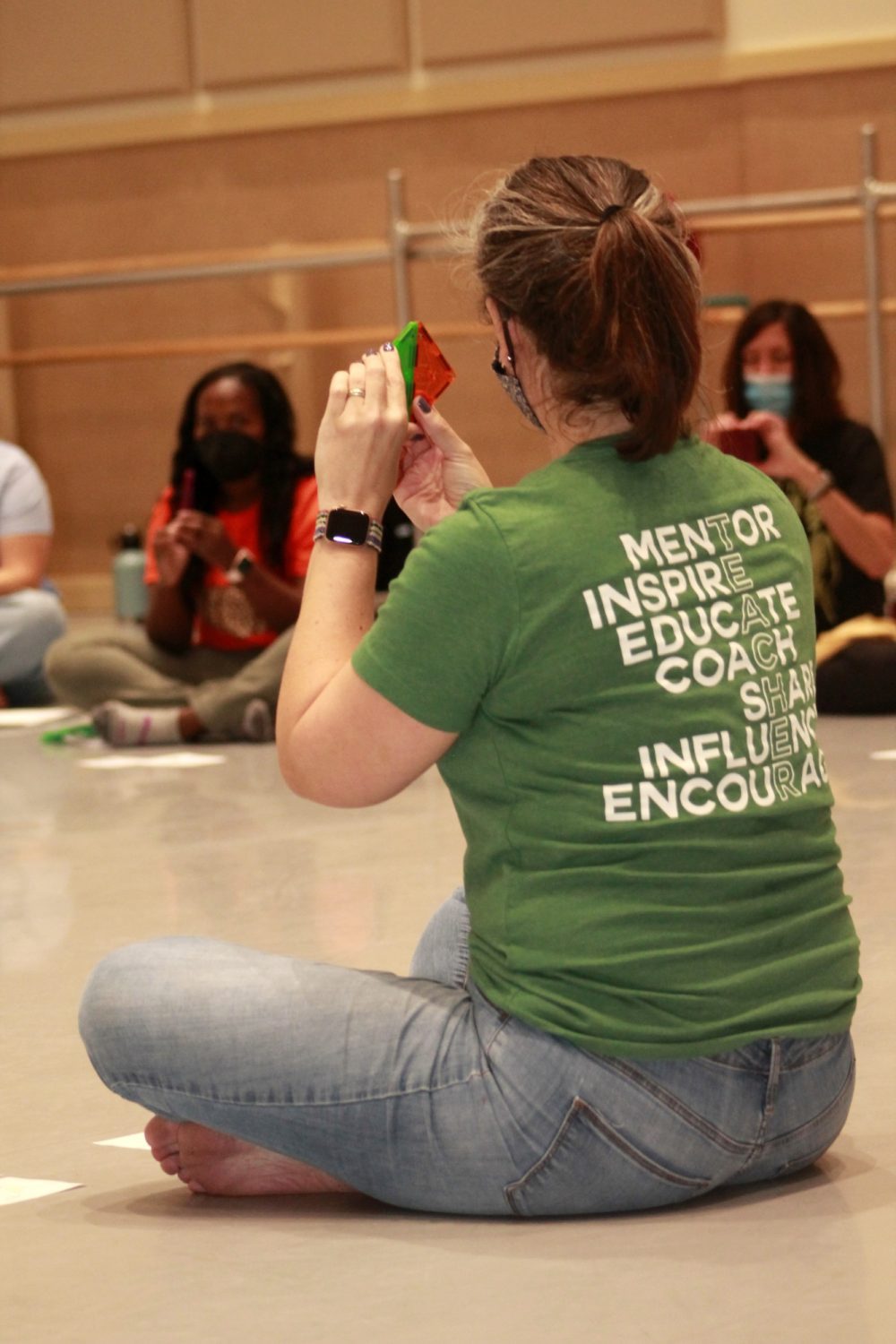
Dr. Marissa Nesbit’s research in dance education investigates and promotes the diverse and complex ways that dance teachers and students make meaning in and through dance curricular experiences in schools and universities.
Dr. Nesbit understands dance curriculum as a dynamic and ongoing process centered on the experiences that learners and teachers create together. Through inquiries into aspects of curriculum such as assessment, ethics, social-emotional learning, and literacy, she aims to broaden conversations within the field of dance education to promote a holistic understanding of curriculum that evolves with the changing educational landscape. In doing so, Dr. Nesbit both connects dance education to concepts outside of dance and emphasizes the unique nature of teaching and learning through movement and body-based expression, offering perspectives that honor the beautiful pedagogical complexities and possibilities we see in dance.
One of her recent projects investigated the ways that dance curriculum can be integrated with the teaching of social-emotional learning (SEL). Working with two UNC Charlotte students, Dr. Nesbit planned and taught a series of weekly dance lessons for kindergarten through second grade students that engaged the concepts of Individuality, Community, and Expressing Feelings. Dr. Nesbit and the students presented a workshop based on these lessons for the 2022 National Dance Education Organization annual conference and wrote an article, published in the Journal of Dance Education, about the process.
Another current project, “Assessment in Dance Education,” investigates the ways that middle and high school dance educators conduct assessments of their students. Through a series of interviews with dance educators, Dr. Nesbit considers how assessment is woven into their teaching practice and how assessment in dance is similar to, yet also significantly different from, assessment in other disciplines. She is continuing to work with the data from that project to share additional insights with the dance education field.
Kaustavi Sarkar

Kaustavi Sarkar investigates virtuosity in dance-theater as fostered in traditional Indian aesthetics through her research on choreography and creative processes. She has commissioned works from female choreographers Ananya Chatterjea, Rohini Dandavate, Aruna Mohanty, and Maya Kulkarni to research and write about the creative process in South Asian aesthetics. Most recently, Sarkar received a 2023-24 “Grant for Arts Projects – Dance” from the National Endowment for the Arts (NEA) for her project, “ShilpaNatyam: Creating a New Vocabulary in Indian Dance,” in partnership with New York-based choreographer Dr. Maya Kulkarni. The project included two residencies and performances across the U.S. in India.
Sarkar has published journal-length inquiries in International Journal of Screendance, Choreographic Practices, Journal on Dance Education, Performance Research etc. Her book Dance Technology and Social Justice: Individual and Collective Emancipation Through Embodied Techniques (McFarland, 2024) has been featured in Dance Studies Association’s 2024-2025 Reading Seminars. She is working on another monograph, Shaping S Curves: Choreographic Process in Odissi, which is currently in contract with University of North Carolina Press.
Sarkar is a leader in her field and serves as a Regional Director for the American College Dance Association (ACDA) mid-Atlantic region. Her research institute, “Dance and Community,” brings artists, educators, and scholars together towards systemic change and has been recognized by ACDA as an integrative medium for diasporic artists. She is the founding member as well as business manager for the journal South Asian Dance Intersections. She is also the founder of the Odissi Odyssey conference held annually at UNC Charlotte, which is the largest gathering of Odissi artists outside India.
Delia Neil
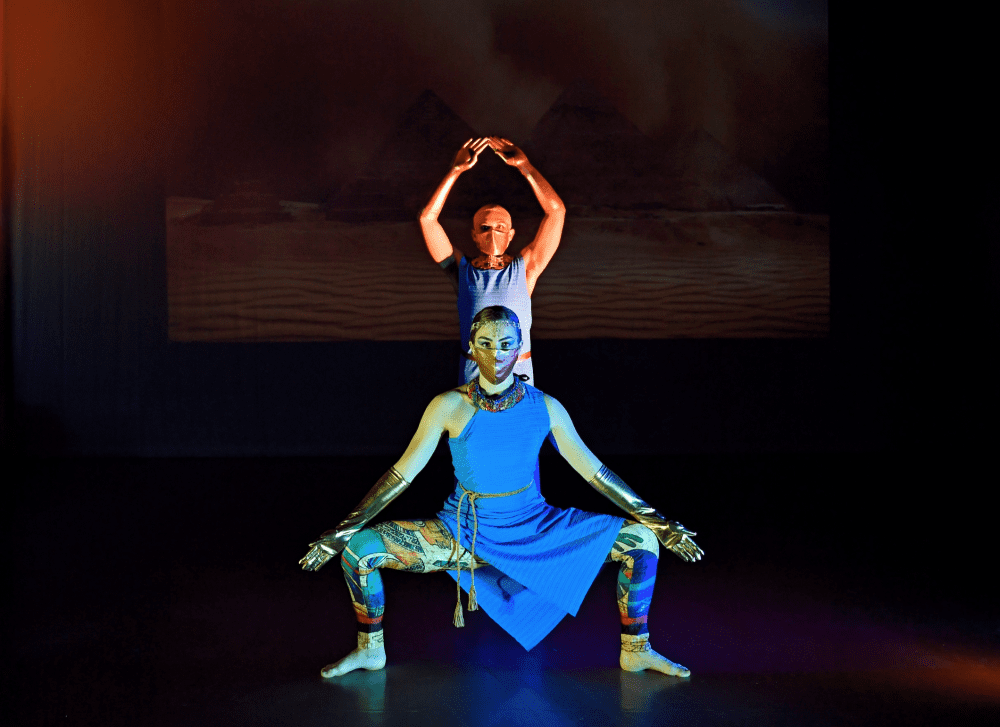
Delia Neil, professional choreographer and master teacher of ballet, has choreographed four works for presentation at the North Carolina Museum of Art. In 2019, she took students to Raleigh to perform her piece, Frida’s Faces, in conjunction with the NCMA’s exhibition of works by Frida Kahlo. In April 2021, six UNC Charlotte dance students performed Neil’s, An Homage to Ancient Egypt, choreographed to accompany the museum’s exhibition, Golden Mummies of Egypt. More recent are a project in response to NCMA’s exhibition of the work of Art Nouveau visionary, Alphonse Mucha, in December 2021 and a work in conjunction with the NCMA’s exhibition of works from the Phillips Collection, performed in October 2022 with a repeated set of performances in Charlotte at the Bechtler Museum of Modern Art in November 2022.
Neil is the coordinator of UNC Charlotte’s Professional Dance Training Certificate with Charlotte Ballet and a frequent presenter at CORPS de Ballet International conferences. She will also present at the upcoming Royal Academy of Dance conference, Mapping Dance and Dance Teaching: Past(s), Present, and Future(s).
Ashley Tate

Ashley Tate’s current research focus is centered around the use of dance as a vehicle for community advocacy and a tool for social change. She recently became a key participant in the nationally recognized No Tears Project, a multidisciplinary festival founded by Oxford American Magazine in 2017 to honor Civil Rights history. The project is a touring group and outreach program that uses conversation and concerts to engage communities around the country in learning about civil rights. She is currently leading the development of the Charlotte, North Carolina edition of the No Tears Project.
Tate has received grants from the City of Charlotte’s Arts and Culture Advisory Board and the UNC Charlotte College of Arts + Architecture New South | Global South initiative. These grants supported the “Brooklyn to Browne’s Ferry” project, a creative platform for the story of Grace A.M.E. Zion Church, its migration, and its effort to redefine itself in a new place and time. Based on oral histories, mapping and historical land research, and demographic research, a multidisciplinary creative team created musical, video, and choreographic works for public presentation in Spring 2024 and 2025.
Tate is also the co-producer of Dance the Vote, a non-partisan grassroots arts-based voter registration initiative founded by Joan Lipkin. This project brings together local, national, and international artists who creatively seek to make a difference during different election seasons by promoting voter awareness and getting eligible voters registered and committed to vote for the upcoming elections. She recently presented “Creative Community: Dance as a Unifying Art Form” at the 2023 National Dance Education Conference in Denver, Colorado and is currently developing a hip-hop research symposium that will focus on conversations surrounding hip hop’s relationship to social justice.
Tamara Williams
Tamara Williams’s research centers around the systematic investigation and analysis of spiritual dances of the African Diaspora. Her current work focuses on the history, movements/gestures/dances, songs, rhythms, context, environment and development of the African-based Ring Shout traditions created by the enslaved people in the Carolinas and Georgia. In an effort to preserve the original movement and gestures of the tradition, Williams is reconstructing the earliest recorded dances of the Ring Shout. She is creating a formulated dance technique that highlights authentic movements of Ring Shout stemming from the Yoruba, Angola and Akan cultures of West Africa and has received two Faculty Research Grants to support that work.
Williams’s research has been published in The Dancer-Citizen Journal and her book Giving Life to Movement, analyzing African-Brazilian dance histories and cultures, was published by McFarland Press in 2021. Her monograph, The African Diaspora and Civic Responsibility: Addressing Social Justice through the Arts, Education and Community Engagement, is currently under contract with McFarland. This latter text investigates how African American, African-Brazilian, Haitian, and Latinx artists and scholars address civic responsibility and social justice issues through the arts. Williams’ research on African American Ring Shout traditions has been disseminated at several colleges and universities in the United States and Brazil. Her article, “Reviving Culture Through Ring Shout,” was published in the scholarly journal, The Dancer-Citizen.
In 2021, Williams co-founded the LAVAGEM! African Brazilian Festival in partnership with her husband, Luciano Xavier, and The Mint Museum. Presented in Charlotte each spring, the festival celebrates African-Brazilian culture through dance, music, and cuisine, and brings together artists, students, and community members for an intercultural exchange. The festival has been a major success, drawing hundreds of participants each year and showcasing the ways in which global dance forms can build connections across cultures.
Research News

Seven faculty in the College of Arts + Architecture are among the 137 recipients of 2025 Artist Support Grants allocated…
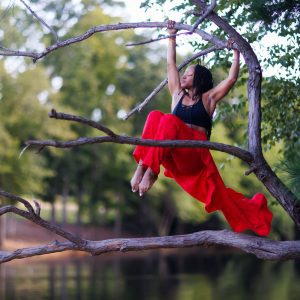
Associate Professor of Dance Tamara Williams is one of 25 dance artists to receive a Dance/USA Fellowship to Artists. Established…
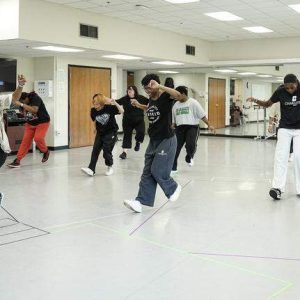
Assistant Professor of Dance Ashley Tate recently spoke with The Charlotte Observer about the inspiration behind her upcoming Hip-Hop conference,…
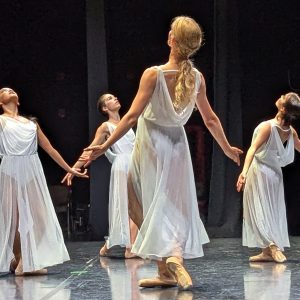
Assistant Professor of Dance Alyah Baker’s “juste, juste” was performed August 24.
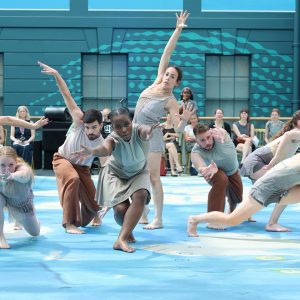
Associate Professor of Dance Kim Jones recently curated a dance festival for the National Maritime Museum in London.
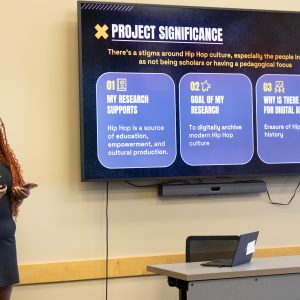
Dance student Naiya Graham was an OUR Summer Research Scholar.
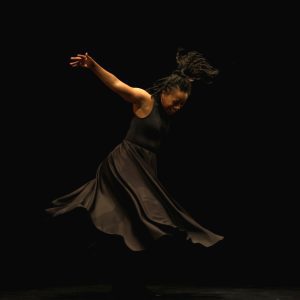
Assistant Professor of Dance Ashley Tate is one of three choreographers to receive a 2025-26 North Carolina Choreographic Fellowship from…

Associate Professor of Dance Tamara Williams and Carolina Quintana Ocampo ’21 are among the cohort of 10 artists.